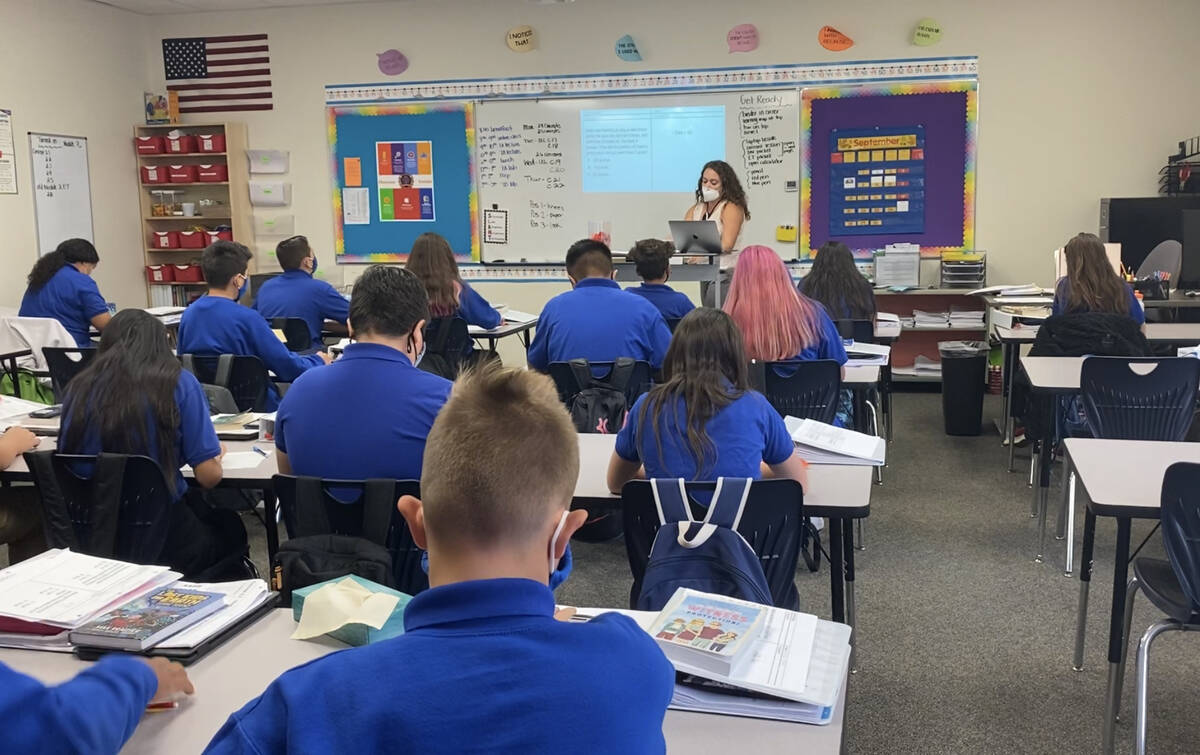EDITORIAL: Study highlights success of charter schools
The most recent gathering of the Nevada Legislature — and the special sessions that followed — will be remembered for bringing Major League Baseball to Las Vegas and for showering billions more on the state’s struggling public schools.
It’s important to note that the Democratic majorities in Carson City amended the stadium bill to impose various conditions on the A’s in return for public funding, yet when it involves accountability measures to ensure that the $2 billion they approved in additional education spending achieves results, they prefer to cover their eyes.
That’s a recipe for perpetual mediocrity. As is the hostility of legislative Democrats to providing Nevada parents with more educational options for their children. The ultimate result of this intransigence will be more kids left behind.
The facts and figures to support educational alternatives are strong.
For instance, Stanford’s Center for Research on Educational Outcomes recently released its third report on charter schools, looking at pre-pandemic data from 2015-2019. It found that “the typical charter school student in our national sample had reading and math gains that outpaced their peers in the traditional public schools they otherwise would have attended.”
This success cut across most demographic lines. Black and Hispanic students in charters outperformed their public school counterparts “by large margins in both math and reading.” Charter school students from poor households “had stronger growth.” So did English language learners.
The results undercut the education establishment’s tired canard that private schools and charters excel because they cherry-pick the wealthiest and best students with motivated parents. In fact, the report found that “charter schools enroll students who are disproportionately lower achieving than the students in their former” public schools.
Not all charter schools succeed, of course. But those that don’t produce results or run into difficulty are often shuttered. That’s not the case with traditional public schools; failing campuses are typically rewarded with more taxpayer support. In addition, the report notes that the competitive pressure charters put on traditional schools “strengthens public education overall” by providing “incentives” for schools to improve.
Nevada’s numbers were positive, revealing that the state’s charters have shown a “vast improvement” in results over the past decade. Academic growth in both reading and math was higher at Silver State charter schools than at traditional campuses, the Stanford review found.
Charters are just one component of a robust school choice program. Yet Nevada Democrats remain barely tolerant of such schools and adamantly oppose more aggressive choice proposals. Legislative Democrats refused to expand a small scholarship program that allows less-fortunate children to attend private schools. They previously repealed a choice program passed by Republicans in 2015. They fight virtually any common-sense measure to impose accountability on public schools for substandard academic achievement.
Meanwhile, the state’s public school test results — particularly in the Clark County School District, the nation’s fifth-largest — remain abysmal no matter how much money lawmakers appropriate. Given how they insist on leading the state down the same old failed path, it seems fair to ask at this point whether legislative Democrats actually care about student outcomes, at all.






















